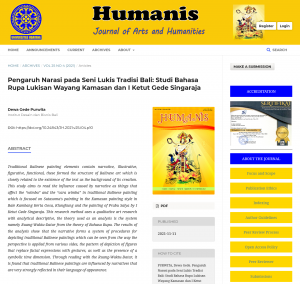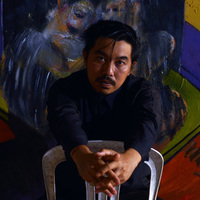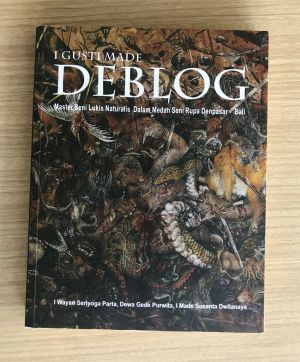
Traditional Balinese painting elements contain narrative, illustrative, figurative, functional, these formed the structure of Balinese art which is closely related to the existence of the text as the background of its creation. This study aims to read the influence caused by narrative as things that affect the “wimba” and the “cara wimba” in traditional Balinese painting which is focused on Sutasoma's painting in the Kamasan painting style in Bale Kambang Kerta Gosa, Klungkung and the painting of Prabu Salya by I Ketut Gede Singaraja. This research method uses a qualitative art research with analytical descriptive, the theory used as an analysis is the system namely Ruang-Waktu-Datar from the theory of Bahasa Rupa. The results of the analysis show that the narrative forms a system of procedures for depicting traditional Balinese paintings which can be seen from the way the perspective is applied from various sides, the pattern of depiction of figures that replace facial expressions with gestures, as well as the presence of a symbolic time dimension. Through reading with the Ruang-Waktu-Datar, it is found that traditional Balinese paintings are influenced by narratives that are very strongly reflected in their language of appearance.









Enable comment auto-refresher